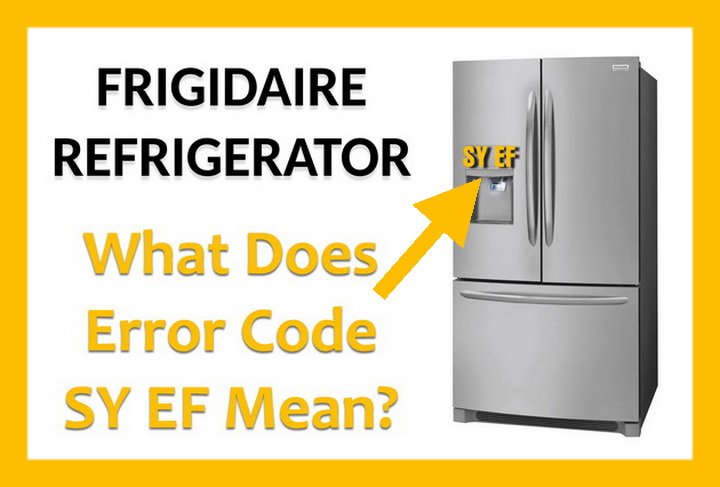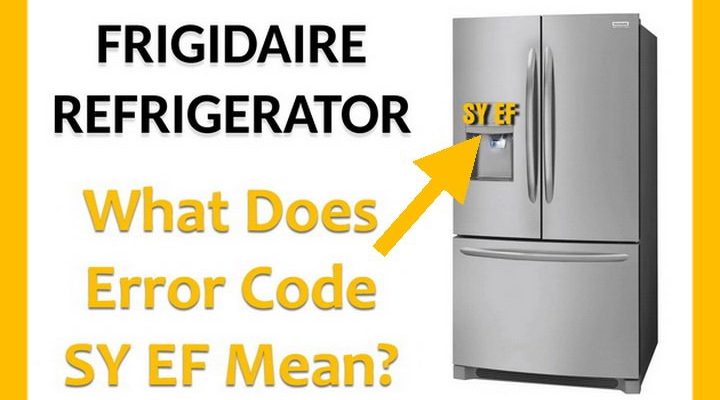
This error code can pop up seemingly out of the blue, and understanding what it implies is crucial for your peace of mind and the safety of your appliance. Think of the LE error code as your refrigerator’s way of sending you a little SOS signal. It’s an alert that something isn’t quite right. Much like your car’s check engine light, it’s a prompt to investigate further, rather than a reason to panic. So let’s demystify this symbol and see what, if anything, you need to do.
Understanding the LE Error Code
The LE error code on a Frigidaire refrigerator primarily indicates a problem related to the refrigerator’s door switch. The door switch is a small, but mighty part of your appliance. When functioning correctly, it ensures the light inside your fridge turns on when you open the door and off when you close it. However, if this switch is malfunctioning, your refrigerator might think the door is open when it’s closed, or vice versa.
Imagine the door switch as the referee in a soccer match. If the referee isn’t sure whether the ball crossed the line, chaos can ensue! Similarly, if your refrigerator can’t accurately detect the door’s status, it might not operate efficiently. This could lead to cooling issues or even cause the interior light to stay on, generating unwanted heat inside the fridge.
Now, here’s the deal: while the LE code itself doesn’t directly indicate a major safety issue, it can lead to inefficiencies that are worth addressing. If ignored, it can affect your refrigerator’s cooling performance, potentially spoiling food and increasing your electric bill. The first step to tackling this issue is understanding the root causes and possible solutions.
Common Causes and How to Address Them
You might be wondering, what exactly causes the LE error code to appear? One common culprit is simply a faulty door switch. Over time, wear and tear can take its toll on this little component, leading to sporadic issues. Picture it like a light switch that starts to flicker; sometimes it works, sometimes it doesn’t.
In some cases, the LE error might be triggered by debris or food particles obstructing the door closure. Just like you wouldn’t want a pebble in your shoe, your refrigerator door doesn’t like obstructions in its path. Make sure the door seals are clean and free from crumbs or sticky spills that might prevent a proper closure.
If you’re facing this error despite checking for obvious issues, it might be worthwhile to reset the refrigerator. Unplug it for a few minutes, then plug it back in. Think of this as giving your fridge a quick nap to reorient itself.
Steps to Resolve the LE Error
Here’s how you can tackle the LE error code step by step. First, inspect the door seals and the switch for any visible damage. If everything seems intact and clean, but the problem persists, the switch itself might be faulty. Replacing a door switch is generally a straightforward process and can often be done with basic tools and a little patience.
Before you start any repairs, remember to unplug the appliance to ensure safety. If comfort levels permit, consult your fridge’s manual for specific instructions tailored to your model. Otherwise, it might be a good idea to call in a professional. It’s like when your bike chain slips off; sometimes you can fix it yourself, but help from someone experienced might be quicker and safer.
If a switch replacement doesn’t solve the issue, and the code keeps appearing, there might be an underlying electrical or control board problem, which is best left to the experts.
Preventing Future Error Codes
Prevention, as they say, is better than a cure. To keep the LE error and other codes at bay, regular maintenance of your refrigerator is key. Think of it like regular check-ups at the doctor to keep things running smoothly. Ensure that the door seals remain clean and undamaged, and avoid slamming the refrigerator doors, which can affect the alignment of the switch over time.
Regularly clearing out old food items prevents unnecessary strain on the door seals and helps maintain optimal cooling conditions. Try keeping a schedule for defrosting and cleaning the interior. It’s a good practice that extends the life of the appliance and keeps those pesky error codes away.
And here’s a pro tip: periodically testing the door switch by gently pressing it in with the door open can help you identify potential failures before they become bigger issues.
In conclusion, while encountering an LE error code might feel concerning at first, understanding its implications can help put your mind at ease. By taking proactive steps and performing regular maintenance, you can ensure your Frigidaire refrigerator continues to function effectively, keeping your food fresh and your household running smoothly.
